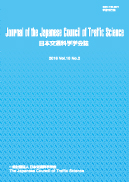In super-aging Japan, there have been sporadic incidents of vehicle collisions caused by elderly people. Although the National Police Agency recommends the use of a consultation desk with safe-driving counselors, the actual conditions and demographics of the consultations and counselors are little known at present. This study aimed to clarify the effective consultation skills of safe-driving counselors in the License Division of the National Police Agency in decision-making support for the voluntary surrender of older adult drivers’ licenses. We used a qualitative exploratory research method. Data were collected by a mail survey of safe-driving counselors in the License Division of the National Police Agency using an anonymous questionnaire, from May to August 2020. The data were analyzed using descriptive statistics or by a quantitative text analysis technique using KH Coder 3 software. We received valid responses from 132 counselors. The occupations of the counselors were: police officer (n=71), clerical staff (n=34), nurse (n=28), and others (including multiple answers). Using morphological analysis, text data were extracted from a total of 447 sentences and 10,192 words from free-description answers. We conducted a frequency analysis for each term, calculated the Jaccard index, and performed a word co-occurrence network analysis, subgraph detection (random walks), and Krippendorff content analysis. Keyword-in-context concordance was used to confirm the context and content of group-generated words, and each group was given a name that characterized its contents. This study was approved by the Tottori University Faculty of Medicine Ethics Committee. The most frequently extracted words were “parties” (i.e., persons concerned; 257 cases), “voluntary surrender” (162 cases), and “family” (155 cases). In the word co-occurrence network analysis, the word with the highest mediation centrality was “parties.” Words with a strong co-occurrence relationship with “parties” were “family” (Jaccard index: 0.38), “voluntary surrender” (0.27), “will” (0.19), “explanation” (0.2), “understanding” (0.14), and “conversation” (0.16). We defined eight effective consultation skills: [Respect the will of the parties], [Listen attentively and empathetically to the parties and their families], [Think from the standpoint of the parties], [Present objective data as judgment material], [Encourage voluntary surrender by demonstrating the benefits to people with mild cognitive impairment or dementia], [Show cases of traffic accidents among older adult drivers to help gain the parties’ understanding], [Facilitate agreement by understanding the anxiety of the parties], and [Coordinate and collaborate with the Regional Comprehensive Support Center].
View full abstract
